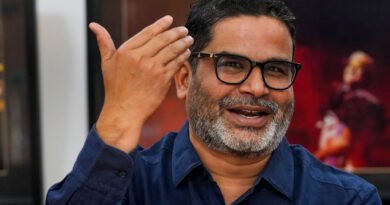Why Theatre Commands must be accompanied by a Uniform Military Code
The Inter-Services Organisations (Command, Control and Discipline) Bill 2023 was introduced in the Lok Sabha last week. The Bill empowers the Commander-in-Chief or the Officers-in-Command of inter-Services organisations to exercise administrative and disciplinary powers as laid down, over persons of individual services in their establishments. Disciplinary action would, however, only be taken under the Army, Navy and Air Force Act as applicable to an individual. Hitherto, the practice has been that if a naval officer/other rank were to commit an offence at the Defence Services Staff College Wellington, an inter-Service institution, the Commandant, a three star General, would repatriate the officer/rating to a naval organisation, where he would be tried under the Navy Act 1957. The Commandant, being an Army Officer is not so empowered. The Bill rectifies this anomaly and is a step that has been long overdue.
The Bill simplifies procedures and facilitates expeditious disposal that will save time and public money by avoiding multiple proceedings. But it does not rectify the lack of a level-playing field in terms of delivery of justice, as persons can be proceeded against only under the Act of their respective Service. A common offense by a group consisting of Army, Navy and Air Force personnel cannot be tried under a common code as certain provisions in the respective Services Acts are dissimilar. Delivery of justice could vary even though the offence is common.
Dissimilarities in the Army/Navy/Air Force Act
Take the case of courts martial.
The Army Act 1950 provides for four types of courts martial – General, District, Summary General and Summary Court Martial (SCM). The SCM can try personnel below the rank of Junior Commissioned Officer (JCO) and can award punishment of dismissal and imprisonment up to one year. The Air Force Act 1950 does not provide for an SCM. The Navy Act has only one type of court martial during peace and a disciplinary tribunal during war. Under the Navy Act, the convening authority nominates the president of the court martial. Under the Army and Air Force Acts, the senior most officer is the presiding officer.
There are also differences in confirmation procedures of findings and sentences awarded by court martial. In the Army and the Air Force, the verdict is subject to confirmation or revision. In the Navy, findings and sentence do not require confirmation and are operative immediately except in case of a sentence of death, which requires confirmation by the central government.
There is also a difference in the role of the Judge Advocate. In the Army and Air Force, their presence is not mandatory for district and summary general court martial. In the Navy, every court martial must have a Judge Advocate present but not participate when the court is considering the findings. In the Army and Air Force, the Judge Advocate is present when the court discusses the findings.
Differences also exist in the powers of punishment. In the Army and Air Force, the Commanding Officer can award a punishment of 28 days detention to a person below the rank of NCO, through a summary trial. In the Navy, the commanding officer of a ship can summarily try any person other than an officer, for any offence other than a capital offence and award imprisonment up to three months.
Earlier attempts at Evolving a Common Uniform Code
The differences among the individual services exist mostly as a legacy of the British Acts from which the existing laws were derived besides having been shaped by peculiarities of the service conditions across individual Services. The need to harmonise these differences was recognised by the Ministry of Defence (MoD) as early as 1965 when it set up a committee that was mandated to evolve a Common Uniform Code for the three Services. It consisted of officials from ministries of Defence, Law, as also representatives of the three Services, including their Judge Advocates. They were also tasked to make special provisions for each Service, taking into consideration the peculiar requirements of the Service.
The Committee drafted a Uniform Code in 1977, which was vetted by the law ministry. An Armed Forces Code Bill 1978 was finalised. The Bill was re-examined by the three Services and objections came to be raised, which resulted in the Chiefs of Staff Committee (CoSC) rejecting the Bill and instead recommending that amendments be done to the respective Acts, taking into consideration their individual requirements. Only a few minor changes followed.
Integration and equitable justice
It is obvious that the differences in the Acts will surface and cause tension in the management of personnel in integrated units and formation. More importantly, the legal principle that will be called into question will be of equitable justice as differences in the Acts will surface and may not produce a uniform result, even though the offence is common. Integrated units will substantially increase when the military shifts to the politically mandated Theatre Command System. In fact, several integrated logistics establishments and integrated training institutions have been created and more are underway. The structural shift must therefore be accompanied by a legislation that amalgamates the three separate Acts into a Uniform Military Code.
The groundwork has already been carried out and the earlier Armed Forces Code Bill 1978 can be utilised as a base document for changes that are now considered necessary. All it requires is the political will and a mandate issued to the three Services, as was done for the creation of the Theatre Command System.
Some countries like the US, the UK and South Africa have already transitioned to a uniform code. China France, Singapore and Australia always had a common code. In India’s case, it was internal resistance from the Services that blocked the reform. It is time that the MoD resurrects its earlier unsuccessful efforts made nearly fifty years ago. This would require the constitution of a committee, perhaps on similar lines as was done before.
The enactment of an Armed Forces Code Bill perhaps by 2024/25 would not only converge with the rolling out of the Theatre Commands but more importantly, it will provide uniformity in maintaining discipline and delivering equitable justice.
The Inter-Services Organisations (Command, Control and Discipline) Bill 2023 has been projected by sections of the media as a move that would enable better management of personnel for the Theatre Commands. This narrative, howsoever slanted, should not hide the imperative for a Uniform Military Code. It should, in many ways, be a low-hanging fruit for the MoD, as they had earlier worked on the reform for fourteen years. The Theatre Commands justification apart, the MoD must retrieve the files and grasp the opportunity in order to improve the delivery of justice in the existing system while balancing the special needs of the Armed Forces.
Lt Gen (Dr) Prakash Menon (retd) is Director, Strategic Studies Programme, Takshashila Institution; former military adviser, National Security Council Secretariat. He tweets @prakashmenon51. Views are personal.
(Edited by Anurag Chaubey)
Source: The Print




